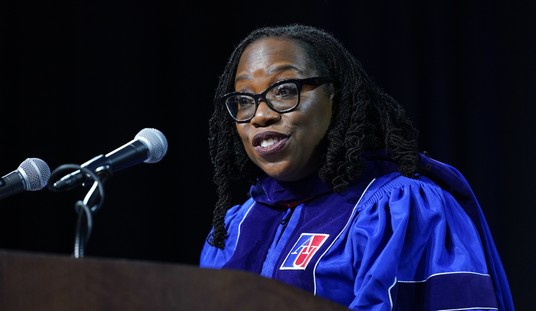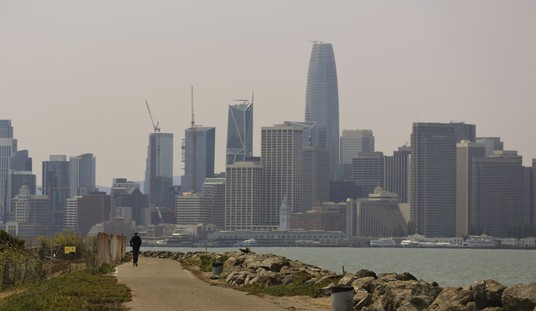California got $3.5 billion in federal money from the Obama administration for its high-speed rail project that will connect San Francisco to Los Angeles. So far, they’ve managed to break ground in an effort to connect two central-state communities so small that one of them is unincorporated, for service that will connect fewer people than live in Anaheim. The project will cost at least $43 billion when it’s done by the most cheery estimates, and that’s only if the state’s High Speed Rail Authority quits drawing more circles around the high desert rather than straight lines between destinations.
The Los Angeles Times editorial board, a backer of high-speed rail, says the lesson from the series of failures is that California needs to create another government agency to run high-speed rail. In my new column at The Week, I argue that the real lesson is that government-run monopolies that deliver worse service at higher cost in a transportation corridor that is already well served by multiple airlines should be abandoned:
California’s high-speed rail project has lots of problems, but its most basic is purpose. The project proposes to connect Los Angeles and San Francisco with an express train that will take two hours and 40 minutes from beginning to end. That sounds good in comparison to the drive, which is approximately six-and-a-half hours, when there is no traffic, or by existing Amtrak service, which takes almost 10 hours to go from Union Station to Moscone Center — and uses two buses.
In contrast, passengers have plenty of choices for direct transportation between the two major metropolitan areas via commercial airlines. Not only does the airline ticket price on Travelocity come in at only a little more than subsidized Amtrak fares for a round trip ($138 as compared to $112), it takes less than half of the time to travel than the proposed “high-speed” rail project does — 75 minutes as opposed to 160 minutes. Consumers can save an average of $20 on fares by booking a flight from less-used Long Beach Airport (adding only 5 minutes to the length of the flight), and still have a choice between three different airlines for non-stop service.
With these choices and convenience, why bother going ground at all?
If it was cheaper, then that might be a reason to pursue high-speed rail, but it’s obviously not going to be less expensive than airline infrastructure. Even if one had to completely rebuild LAX and San Francisco’s airports, the $43 billion price tag would likely more than cover the cost. Even after building the line, though, taxpayers will have to heavily subsidize riders on a high-speed rail line:
A recent study at the Heritage Foundation shows that the federal subsidies for Amtrak now are over $237 per every 1,000 passenger miles, while commercial airline fares get $4.23 of subsidies for the same measure. A ticket may be cheaper at the window for high-speed rail, but it’s going to cost taxpayers a bundle.
The LAT ‘s editors claim that high-speed rail will not only be “cheaper” (which is only true if, as noted, you artificially lower ticket prices through subsidies) but “safer and cheaper competition to airlines” as well as “reducing reliance on gas-guzzling automobiles.” Airlines have an unparalleled safety record in the transportation sector, and that comes from a man who’s a white-knuckle flier. Besides, airlines compete with each other; government trains shouldn’t exist just to compete with private-sector transportation, but should only get that kind of extremely expensive taxpayer investment when no private-sector solutions exist for a corridor. That’s hardly the case between San Francisco and Los Angeles, where several airlines provide non-stop competition not just between SFO and LAX, but also with San Jose in the north and Long Beach, Burbank, and Ontario in the south.
As far as the concern over the environment, well, California will need a lot more electricity to run the high-speed rail. Where will they get it? The state won’t build any more electricity-producing plants, which is why they buy so much from out of state. Arizona already provides 25% of the power used in Los Angeles. They will either have to start building fossil-fuel generation facilities to get the power they need, or they will have to buy more from fossil-fuel generators out of state. Furthermore, the route will chew up hundreds of miles of land, force the state to level hills or dig tunnels, or eat up otherwise productive agricultural land in the Central Valley.
Oh, and don’t forget about that pesky little minor problem of running the tracks roughly parallel to, and presumably at points over, the San Andreas Fault. One of the more amusing comments at The Week demanded that I consider what happens when the world runs out of jet fuel for the airlines. Somehow, I think California will see a major quake across the San Andreas before that day comes, and maybe more than one.
The High Speed Rail Game is very much like the global thermonuclear war simulation in the film War Games. The only way to win is not to play — at least with taxpayer money.
Update: Reason TV has a lengthy video on the drawbacks of high-speed rail, although it focuses more highways as the alternative for public spending. At least stick around long enough to hear the example of the high-speed rail proposal for the Chicago-St. Louis proposal. That project would have spent $2 billion to upgrade a route in order to take 20 minutes off of its current 3-hour, 45-minute trip time.








Join the conversation as a VIP Member